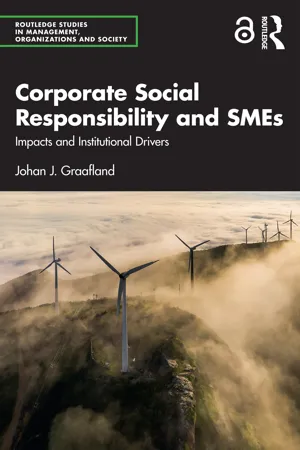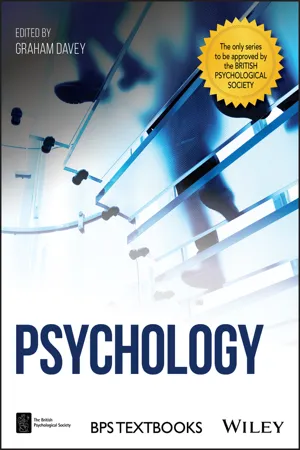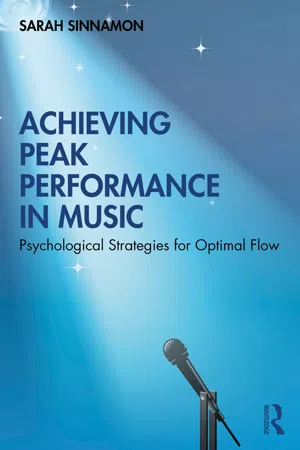Psychology
Social Motivation
Social motivation refers to the psychological processes that drive individuals to seek and maintain social connections, approval, and belonging. It encompasses the desire for social interaction, acceptance, and affiliation, as well as the motivation to understand and connect with others. Social motivation plays a crucial role in shaping behavior, emotions, and relationships within social contexts.
Written by Perlego with AI-assistance
Related key terms
Related key terms
1 of 4
Related key terms
1 of 3
7 Key excerpts on "Social Motivation"
- eBook - ePub
- Michael Hymans(Author)
- 2022(Publication Date)
- Routledge(Publisher)
Motivation is the internal condition that activates behaviour and gives it direction. Motivation energises and directs goal-oriented behaviour. The term is generally used for human motivation but, theoretically, it can be used to describe the causes for animal behaviour as well. According to various theories, motivation may be rooted in the basic need to minimise physical pain and maximise pleasure; or it may include specific needs such as eating and resting; or a desired object, hobby, goal, state of being, ideal; or it may be attributed to less-apparent reasons such as altruism, morality or avoiding mortality.Motivation Concepts: Intrinsic and Extrinsic Motivation
Intrinsic motivation refers to motivation that comes from inside an individual rather than from any external or outside rewards, such as money or good grades. The motivation comes from the pleasure one gets from the task itself or from a sense of satisfaction in completing or even working on a task. An intrinsically motivated person will work on a mathematical equation, for example, because it is enjoyable. Or an intrinsically motivated person will work on a solution to a problem because the challenge of finding a solution provides a sense of pleasure. In neither case does the person work on the task because there is some reward involved, such as a prize, a payment, or in the case of students, a high grade. Intrinsic motivation does not mean, however, that a person will not seek rewards. It just means that such external rewards are not enough to keep a person motivated. An intrinsically motivated student, for example, may want to get a good grade on an assignment, but if the assignment does not interest that student, the possibility of a good grade is not enough to maintain that student’s motivation to put any effort into the project.This form of motivation has been studied by social and educational psychologists since the early 1970s. Research has found that it is usually associated with high educational achievement and enjoyment by students. Intrinsic motivation has been explained by Heider’s (1958 ) attribution theory, Bandura’s (1986 , 1993 and 1997 ) work on self-efficacy and Deci and Ryan’s (1985 - eBook - ePub
Corporate Social Responsibility and SMEs
Impacts and Institutional Drivers
- Johan J. Graafland(Author)
- 2021(Publication Date)
- Routledge(Publisher)
In the remainder of this chapter, first, the theoretical framework and hypotheses are outlined. Then we present the methodology, followed by the results of our empirical analysis. The chapter concludes with a summary of the findings.14.2 Conceptual Framework
Motivation, the reason upon which one acts, is an important antecedent to behaviour (Kuckertz and Wagner, 2010). Behaviour can be driven by intrinsic and extrinsic motives (Lindenberg, 2001; Scopelliti et al., 2018). Within psychology, intrinsic motivation is related to the joy and satisfaction derived from an activity (Deci and Ryan, 1985). Intrinsic motivation does not only cover behaviour based on enjoyment but also a motivation to act appropriately (Lindenberg, 2001). This type of intrinsic motivation stems from the inner desire to follow a particular norm or principle.Motivation crowding theory has argued that intrinsic motivations are not independent from external pressures that drive extrinsic motives (Frey, 1992). More specifically, crowding theory has recognized that external pressures may crowd in or reinforce intrinsic motivation if the individual concerned perceives these external pressures as supportive (Eisenberger et al., 1999). However, external pressures may also crowd out intrinsic motivations (Han et al., 2018). This idea stems from literature on cognitive social psychology and implies that external rewards or pressures may reduce intrinsic motivation (Bowles, 2016).In this chapter, we focus on the influence of external pressures generated by NGOs and media on intrinsic CSR motivation of managers in enterprises. Figure 14.1 presents our conceptual framework which distinguishes between a direct (Hypothesis 14.1) and an indirect influence. The indirect effect reflects that NGOs and media can increase market benefits of CSR by activating external stakeholders (Hypothesis 14.2) and that these market benefits subsequently can affect intrinsic motivation through crowding mechanisms (Hypothesis 14.3). The framework focuses on perceived - eBook - ePub
- Graham C. Davey(Author)
- 2018(Publication Date)
- Wiley(Publisher)
The culture we are bought up in has long been thought to influence how motivated we feel to achieve. For example, most cultures can be divided into collectivist or individualistic types, and these different types can significantly influence how important we believe achievement to be, as well as influencing how social relationships affect our motivation to achieve (Trumbull & Rothstein-Fisch, 2011). In particular, collectivist cultures (such as many Asian cultures) tend to influence individuals to view achievement as something that should be accomplished in cooperative groups, while individualistic cultures (such as Western European and North American cultures) place great emphasis on individual achievements.SECTION SUMMARY
- We are motivated to be socially involved with others and to be seen as able to achieve by others.
- All of us are part of multiple social groups, and humans are biologically programmed to form social relationships.
- Social relationships can benefit not only our emotional health but also our physical health.
- In this increasingly technological era, even virtual social support could be beneficial for us.
- Achievement motivation is the drive that people feel to succeed.
- Self-determination theory states that we all require competence, autonomy, and relatedness to feel intrinsically motivated and to experience well-being.
- Our ability to delay gratification, even at a young age, can have a number of important influences on what we achieve over the course of our lifetime.
- Most cultures can be divided into collectivist or individualistic types, and these different types can significantly influence how important we believe achievement to be, as well as influencing how social relationships affect our motivation to achieve.
APPLICATIONS OF THEORIES OF MOTIVATION
LEARNING OBJECTIVE 5.6
Describe the ways in which theories of motivation can be used in everyday situations.We have learned about several theories of motivation and reviewed research into motivation. We are now going to draw this knowledge together and think about how we can apply it in several everyday situations. - eBook - ePub
Psychology in the Classroom
A Teacher's Guide to What Works
- Marc Smith, Jonathan Firth(Authors)
- 2018(Publication Date)
- Routledge(Publisher)
p.2077 Motivation Motivation remains a problematic area for schools. This chapter aims to demystify the nature of motivation and critically examine methods that can be used to support it, both in the classroom and in the wider school environment.● The main theories of motivation. ● Explanations of intrinsic and extrinsic motivation. ● How self-determination theory can enhance motivation. ● How teachers can internalise extrinsic motivation. ● Why extrinsic reward systems often fail. ● Ways in which teachers can motivate students.Motivation has obvious impact on learning; students who are motivated learn faster and more efficiently than those who lack motivation. Motivation can be thought of as a combination of biological, emotional, cognitive and social factors that both direct and activate behaviour. Student motivation is also, of course, about the desire to be engaged in the learning process, but detecting this engagement in students is often highly problematic. It’s perfectly possible for students to appear motivated yet still be disengaged, as well as for them to lack the outward signs of engagement while remaining highly motivated. Motivation is a complex construct, and nurturing motivation is more complex still. Further complications arise when teachers use certain motivational strategies that appear to be effective in the short term but often lead to lower levels of motivation and engagement further down the line.p.208 Motivation is comprised of three basic characteristics:● Activation. The initiation or the triggering of the specific behaviour. For example, we might feel hungry and go (or be motivated to go) to the kitchen to get some food.● Persistence. The continued effort that we put into a task or how long we persevere. While some students might give up on a task quickly, others will keep going, even when the task becomes difficult or they experience repeated failure.● Intensity. - Christine M. Rubie-Davies, Jason M. Stephens, Penelope Watson(Authors)
- 2015(Publication Date)
- Routledge(Publisher)
While autonomy and competence are sufficient to fuel intrinsic motivation, social relationships and settings are also crucial to foster and sustain extrinsic motivation. This is because extrinsically motivated tasks arise in a social order and take their value from the purpose that social order bestows on them. For example, students may come to value assignments because these are acknowledged as a fair means of assessing learning, stimulate students to pursue learning and assimilate knowledge, and contribute to their final course grade or degree qualification. The extent to which students buy into, or feel related to, the social structure in which they learn will affect how completely they take on the logic of the social structure as their own, such as recognizing the value of assignments in the example above. This is known as relatedness. Relatedness refers to the state of possessing warm and supportive human ties, where individuals are meaningfully socially connected to the people or communities which structure the task. Relatedness has been found to reliably function as a third motivational need, and Deci and Ryan found it necessary in addition to autonomy and competence to account for changes in the establishment and continuation of extrinsic motivation (Deci and Ryan 2012).Within educational environments, intrinsic motivation is recognized as the most autonomous and desirable motivation. However, in practice, most educational tasks do not emanate first and foremost from students’ desire to learn a particular topic in the particular way that it is being taught. As a result, students’ sense of relatedness should be seen as crucial for stimulating their motivation. Educators may foster this by creating warm relational conditions and socially compelling learning environments that generate roles or tasks that the learner (a) wants to work within and (b) believes implicates them to act and behave as a motivated learner.- eBook - ePub
Achieving Peak Performance in Music
Psychological Strategies for Optimal Flow
- Sarah Sinnamon(Author)
- 2020(Publication Date)
- Routledge(Publisher)
If it’s music, why music? What is it that drives people to want to play a musical instrument, to perform, to practise for hours and years, and why do some people not continue? Why are some not compelled to practise, or to practise but not perform? Psychologists are interested in finding the explanations for why some people practise more than others, why some perform more than others, why some people reach higher levels of achievement than others, why some people disengage or dropout. Coming to an understanding about motivation and motivational orientation has been essential to finding the answers to these questions.A number of theories have been put forward by psychologists to explain the reasons why we take part in the activities we choose. The most influential theory has been the theory of self-determination.1 This theory proposes that there are actually a number of types of intrinsic motivation and a number of types of extrinsic motivation that explain our reasons for engaging in an activity.“It [the music] was new, it was exciting, the kind of thing that makes you feel ‘I’m stretching myself here’ and that’s a good thing”.The theory of self-determination says that we can be intrinsically motivated to learn – for the pleasure of learning something new or developing; and we can be intrinsically motivated to achieve – for the pleasure experienced when attempting to accomplish something; and thirdly, we can be intrinsically motivated to experience stimulation – that is to engage in something in order to experience the stimulating sensations it provides, whether sensory or aesthetic or exhilaratory.“The ego becomes very dangerous”, “if you’re playing to the audience, you’re not going to have flow”.On the other end of the motivation continuum, is extrinsic motivation (see Figure 6.1 - eBook - ePub
- Christine Hodson(Author)
- 2014(Publication Date)
- Routledge(Publisher)
3 Motivation at workIntroduction The behaviourist model of motivation Maslow’s hierarchy of needs McClelland: the need for achievement Job satisfaction SummaryIntroductionOne of the main concerns of organisational psychology is to discover the motivation for working. Perhaps we should start by defining motivation. A motivator is something which induces a person to act. Motivation can therefore be described as purposive behaviour directed towards achieving a goal. The goal may be physiological, for example, a thirsty individual will be motivated to find something to drink and their behaviour will be directed to that end. However other goals may be much more complex. In the early days of psychology attempts were made to list the basic human needs that motivate human behaviour. The lists became so long that the attempt was quietly abandoned!In the previous chapter we examined Warr’s view of what work has to offer the individual but the questions of why we choose to work at all, where we choose to work, and how much effort we expend whilst there, still need answering.The behaviourist model of motivationBehavioural theory is based on the theories of operant and classical conditioning and is extended to social learning theory. It suggests that our behaviour is governed, or shaped, by the responses we meet in our environments. We will repeat behaviours which we find pleasant and which meet our needs, we will stop behaviours which produce no response and we will actually avoid unpleasant activities. This theory was highly influential in the early development of organisational psychology, particularly as it was taken up by Taylor (1911).Conditioning theoryClassical conditioningClassical conditioning involves learning by association. If event A is consistently followed by event B then they will become associated. Event A will cause people and animals to anticipate event B. If you have a dog or cat and feed it on tinned food you will have observed that opening any tin produces a response from your pet. Your cat may wrap itself round your legs in an affectionate manner and your dog is likely to become excited. They have learned that open tins are often followed by food in their bowls.
Index pages curate the most relevant extracts from our library of academic textbooks. They’ve been created using an in-house natural language model (NLM), each adding context and meaning to key research topics.
Explore more topic indexes
Explore more topic indexes
1 of 6
Explore more topic indexes
1 of 4






